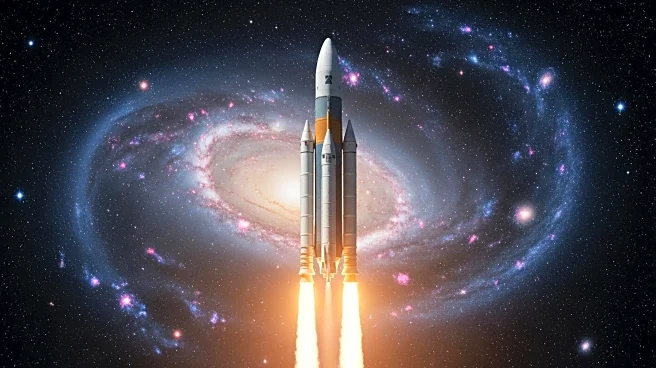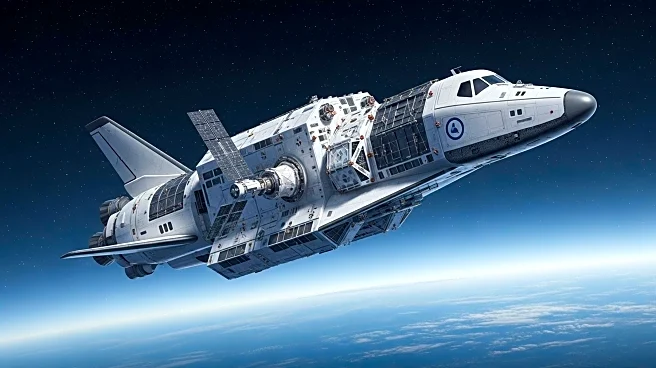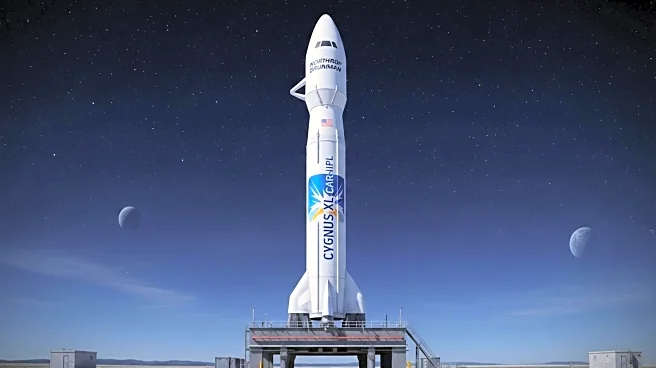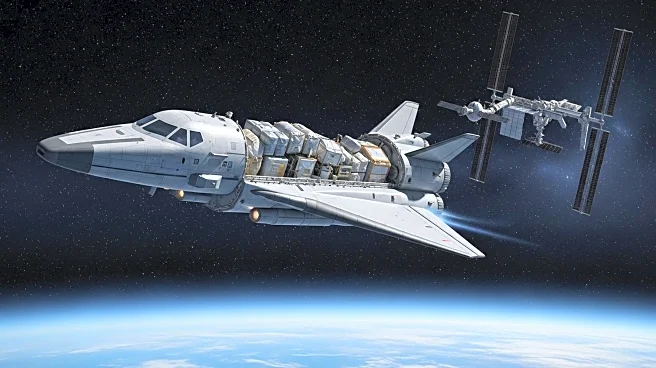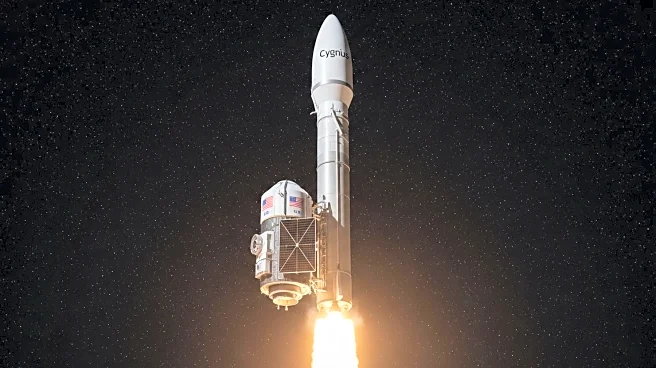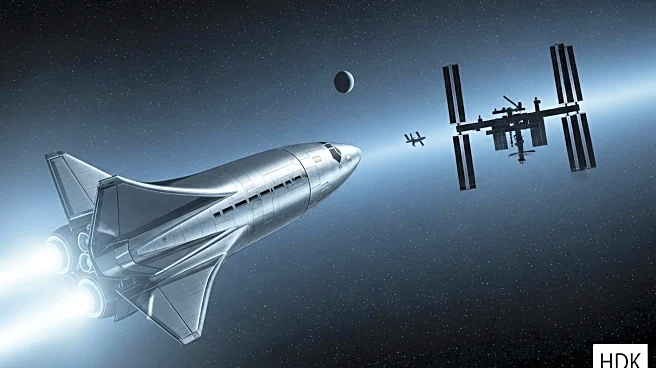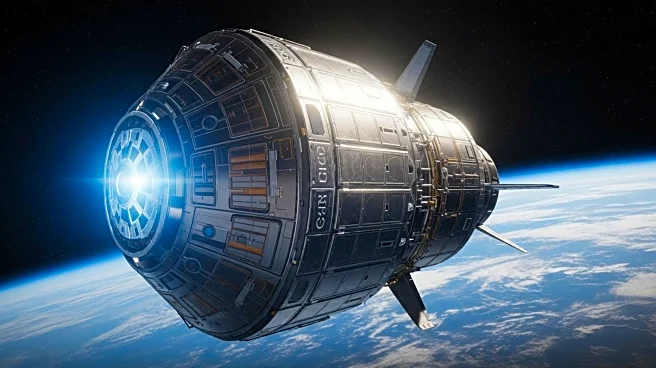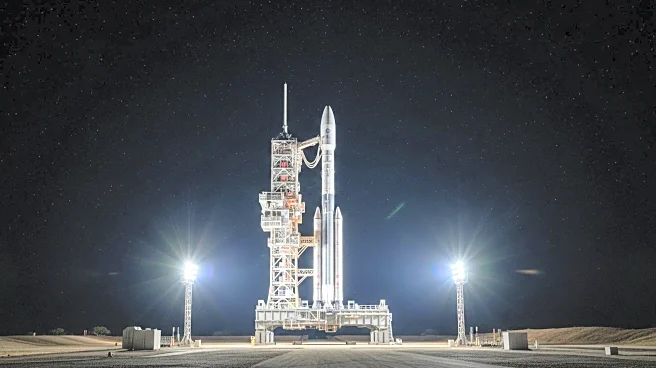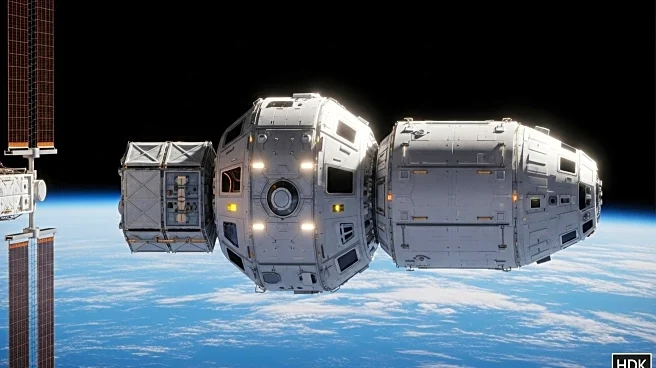What's Happening?
SpaceX successfully launched an upgraded Northrop Grumman Cygnus cargo ship to the International Space Station (ISS) on Sunday. The unpiloted spacecraft, carrying over 5 tons of spare parts, research material, and crew supplies, is set for capture by the ISS early Wednesday. The launch marks the first flight of the Cygnus XL, which has been lengthened to carry more cargo. The Falcon 9 rocket's first stage successfully landed back at the Space Force station, marking SpaceX's 67th Florida touchdown. The Cygnus XL is expected to remain at the ISS for about six months before detaching and burning up on reentry.
Why It's Important?
The successful launch of the Cygnus XL represents a significant advancement in cargo delivery capabilities to the ISS, allowing for increased supply capacity. This is crucial for maintaining the station's operations and supporting scientific research. The mission also highlights SpaceX's continued reliability in space transportation, reinforcing its role as a key player in commercial spaceflight. The increased cargo capacity of the Cygnus XL ensures that the ISS can stock up on essential supplies, which is vital for long-term missions and experiments conducted in space.
What's Next?
The Cygnus XL is scheduled to be captured by the ISS's robotic arm early Wednesday, with berthing to follow. It will remain attached to the station for approximately six months, providing necessary supplies and supporting ongoing research. The successful integration of the Cygnus XL into ISS operations may lead to further enhancements in cargo delivery systems, potentially increasing the frequency and volume of supplies sent to the station.
